Introducing Merida in the Yucatan, Mexico
A Mayan city with 500 years of Colonial Spanish History
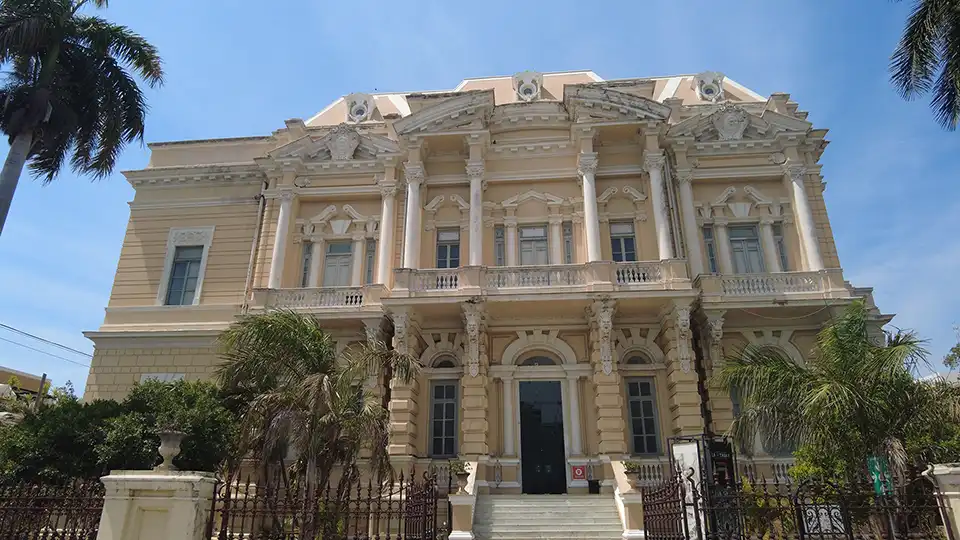
One of Merida's stately old mansions
Nestled in the heart of Mexico's Yucatan Peninsula, Merida enchants visitors with its rich cultural tapestry and vibrant atmosphere. Steeped in Mayan heritage, this colonial city boasts colorful streets lined with historic architecture, bustling markets, and lively plazas. Travelers are drawn to Merida's lively music scene, traditional cuisine, and captivating museums showcasing the region's fascinating history. Explore nearby archaeological sites such as Chichen Itza or relax on the pristine beaches of the Gulf Coast. Whether wandering through its charming streets or immersing in its cultural festivities, Merida offers an unforgettable Mexican experience.
Some History
Merida, known as T'ho in the Maya language, was founded by the Maya civilization some time around the 7th century AD. T'ho served as an important urban center for the Maya people, and its strategic location made it a significant hub for trade and cultural exchange in the region.
The site of current day Merida was occupied by the Spanish conquistador Francisco de Montejo y León on January 6, 1542. Its founding marked the establishment of one of the oldest colonial cities in the Americas, built upon the previously mentioned ruins of the ancient Mayan city of T'ho. It should be noted though that T'Ho was largely abandoned before the Spanish arrived. The Spanish conquistadors encountered some indigenous populations in the area when they founded Merida in 1542, but T'ho itself had been largely deserted by that time.
After its founding in 1542, the city underwent significant transformation. Spanish settlers imposed their culture and religion, leading to the construction of grand colonial buildings, including churches and government offices, atop existing Mayan structures. The indigenous Maya population faced forced labor and conversion efforts. Despite resistance and uprisings, Spanish control solidified, and Merida became a prominent hub of colonial administration and trade in the Yucatan Peninsula. This period marked the integration of Spanish and indigenous cultures, shaping Merida's unique identity for centuries to come.
In the 17th century, Mérida was a vibrant colonial city under Spanish rule. Its streets were lined with ornate colonial architecture, reflecting both Spanish and indigenous influences and the city bustled with trade, fueled by its strategic location and access to lucrative resources like henequen and sisal. Mérida's central plaza served as a hub for social gatherings and political events. Despite continued conflicts with indigenous Mayan populations, Mérida thrived as a center of culture and commerce.
The 18th and 19thcenturies in Mérida marked a period of political stability under Spanish colonial rule, fostering an environment conducive to sustained growth and development. This era saw advancements in technology and infrastructure, including improved transportation networks such as roads and ports. These developments facilitated trade and communication, contributing to the city's economic prosperity and reinforcing its position as a prominent colonial hub in the Yucatán Peninsula.
Merida's colonial architecture and rich cultural heritage reflect its historical significance as a Spanish colonial stronghold in the Yucatan Peninsula.In addition, there are significant Mayan historical and archeological sites in and around Merida which are well worh exploring
About The Area
The People
The majority of the population in the Yucatan Peninsula is of mixed indigenous and European (mostly Spanish) ancestry. Mestizos form a significant portion of the population and are an integral part of the region's cultural fabric. The heritage of the Mestizo population has a rich but tortured history.
Before the Maya civilization emerged, several other cultures thrived in Mesoamerica. Some of these cultures include:
- Olmec: One of the earliest known civilizations in Mesoamerica, the Olmec flourished from around 1400 BCE to about 400 BCE. They are known for their distinctive art style (including the massive heads carved out of basalt), monumental architecture, and the creation of the first Mesoamerican writing system, known as the Olmec hieroglyphs.
- Izapa Izapa was an ancient Mesoamerican archaeological site located near the Pacific coast of Chiapas, Mexico. Although not directly located in the Yucatan Peninsula, the Izapa civilization is believed to have had cultural influence on the early Maya. Izapa is known for its distinctive art style and may have served as a cultural link between the Olmec and Maya civilizations.
- Teotihuacan: Teotihuacan was a major ancient city in the Basin of Mexico, near present-day Mexico City. It reached its peak between the 1st and 7th centuries CE, with a population estimated at over 100,000 people. The culture of Teotihuacan exerted a significant influence over much of Mesoamerica, although they were not centered in the Yucatan.
- Zapotec: The Zapotec civilization was an indigenous pre-Columbian civilization that flourished in the Valley of Oaxaca, south of the Yucatan. Their civilization reached its peak around 500 BCE to 800 CE, with significant achievements in architecture, art, writing, and urban planning.
- Toltec: The Toltec civilization is believed to have flourished from around 900 CE to 1168 CE in central Mexico. They are often associated with the mythical city of Tollan (also known as Tula). The Toltecs are known for their military prowess, art, and influence on later Mesoamerican cultures, including the Aztecs. They were not directly in the 'Yucatan, but influenced the emergent Maya culture
The Maya civilization began to emerge in the Yucatan Peninsula around 2000 BCE. This early period is often referred to as the Preclassic or Formative period. During this time, small villages and agricultural communities began to form, marking the beginnings of Maya society in the region.
Over time, these communities evolved and grew, developing complex social structures, architecture, and cultural practices. The Classic period of Maya civilization, characterized by the rise of great city-states and monumental architecture, began around 250 CE and lasted until around 900 CE. This period saw the height of Maya achievements in art, architecture, astronomy, mathematics, and writing.
After the decline of the Classic period, the Maya continued to inhabit the region, with the Postclassic period lasting from around 900 CE to the arrival of the Spanish conquistadors in the 16th century. Throughout this time, the Maya civilization experienced various shifts in power, cultural changes, and the rise and fall of different city-states in the Yucatan Peninsula and surrounding regions.
The Spanish invasion had a profound and devastating impact on the Maya civilization. When the Spanish conquistadors, led by Hernán Cortés, arrived in the Yucatan Peninsula in the early 16th century, the Maya civilization was already in a state of decline compared to its heyday during the Classic period. However, the arrival of the Spanish expedited this decline and brought about significant changes in Maya society, culture, and population.
- Destruction of Cities and Monuments: The Spanish conquest led to widespread destruction of Maya cities, temples, and monuments. Conquistadors often razed cities to the ground and used materials from Maya buildings to construct new structures for the Spanish colonizers. This destruction resulted in the loss of invaluable cultural and historical heritage.
- Forced Conversion and Religious Persecution: The Spanish imposed Christianity on the Maya population, often through force and coercion. Maya religious practices, including rituals, ceremonies, and worship of their deities, were suppressed and replaced with Catholicism. Many Maya temples were destroyed or converted into Christian churches.
- Forced Labor and Encomienda System: The Spanish implemented the encomienda system, which granted Spanish settlers control over indigenous labor and resources. Maya people were forced to work in mines, plantations, and other labor-intensive industries under harsh conditions. This exploitation led to widespread suffering, disease, and death among the Maya population.
- Disease and Epidemics: The Spanish conquest brought diseases such as smallpox, measles, and influenza to the New World, to which the indigenous populations had little to no immunity. These diseases spread rapidly among the Maya and other indigenous peoples, resulting in devastating epidemics that decimated their populations. It's estimated that diseases were responsible for the majority of indigenous deaths following the Spanish conquest.
- Social Disruption and Fragmentation: The Spanish conquest disrupted traditional Maya social structures and governance systems. Many Maya communities were fragmented, and their political power was undermined by Spanish colonial authorities. This fragmentation contributed to the weakening of Maya society and the erosion of their cultural identity.
- Survival and Resistance: Despite the devastating impact of the Spanish invasion, Maya culture and traditions persisted among certain communities. Maya resistance movements, such as the Caste War of Yucatán in the 19th century, demonstrated the resilience and determination of the Maya people to preserve their heritage and autonomy.
Overall, the Spanish invasion had a lasting and detrimental effect on the Maya civilization, leading to cultural devastation, population decline, and social upheaval. However, Maya culture continues to endure to this day, and efforts are ongoing to preserve and revitalize Maya languages, traditions, and heritage.
Merida was one of the chief colonial Spanish cities, and its Spanish cultural legacy is everywhere to see. Dig a little deeper though and you'll find ample evidence of a rich and thriving Mayan culture.
When To Go
The best time to visit Mérida is between December and March if you're looking for dry weather and lots of things to do. Opt for a January trip to experience Mérida Fest, a huge annual celebration that honors the founding of the city.

Merida Annual Temperatures
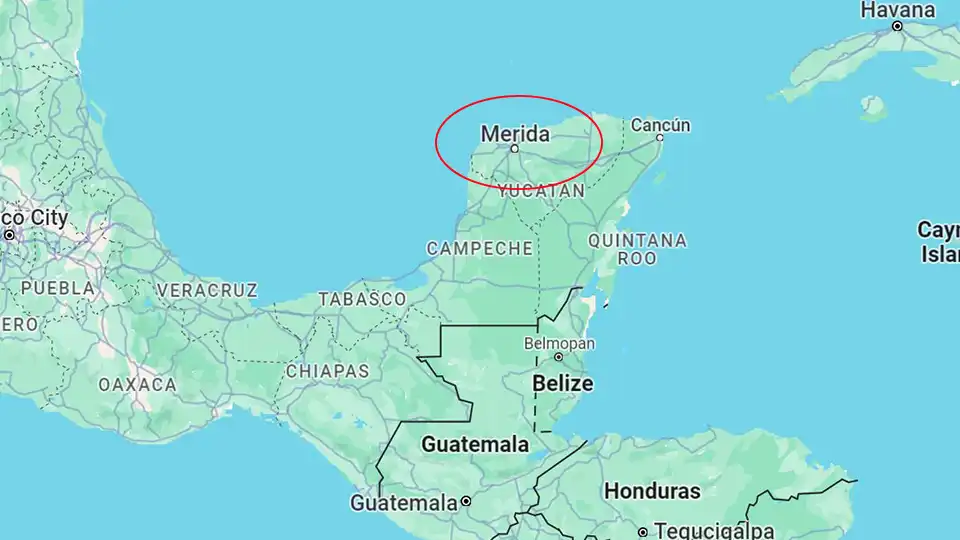
Merida in the Yucatan Peninsula
The Cuisine
At the heart of Mayan cuisine are staple ingredients such as maize (corn), beans, squash, chilies, tomatoes, and avocados, which are combined with indigenous herbs and spices to create unique flavors and textures.
Yucatecan cuisine blends indigenous Mayan traditions, European influences, and Afro-Caribbean ingredients into a rich tapestry of flavors.
Key ingredients like achiote, habanero peppers, and sour oranges infuse dishes with unique tastes. Iconic specialties include cochinita pibil, slow-roasted pork marinated in achiote and sour orange juice, and poc chuc, grilled meat seasoned with citrus and spices. Seafood features prominently, with ceviche de pulpo and pan de cazón showcasing the region's coastal bounty.
Influences from Spain introduced pork, citrus fruits, and spices, while African influences brought techniques and ingredients like plantains and coconuts.
Desserts like marquesitas, rolled crepes filled with cheese or Nutella, and papaya with sweetened condensed milk add a sweet touch. This fusion of cultures has created a diverse culinary landscape that defines Yucatecan cuisine as a vibrant highlight of Mexican gastronomy.
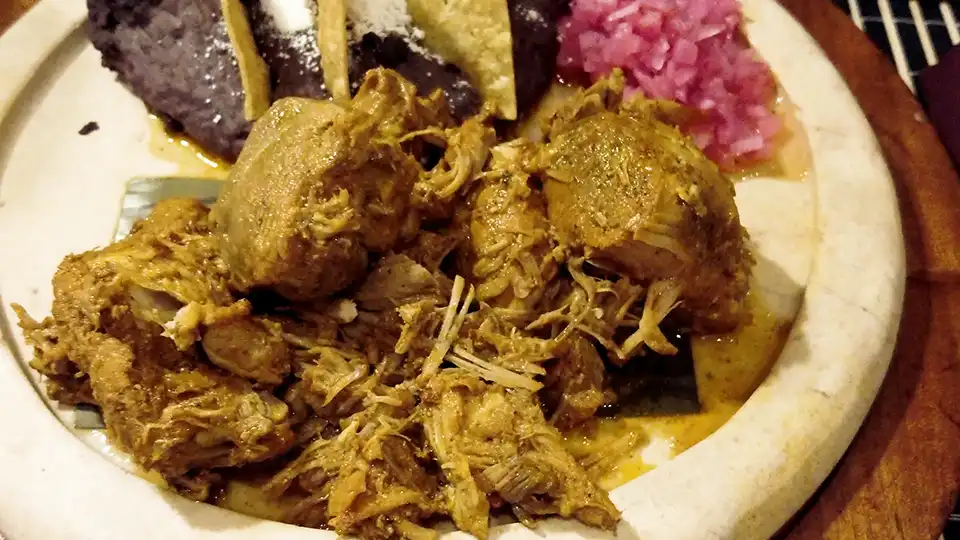
Cochinita Pibil
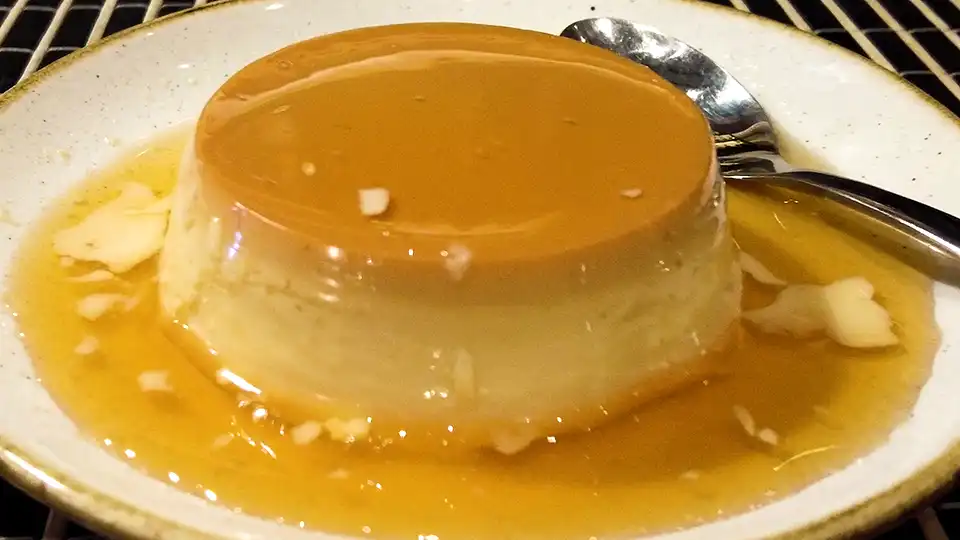
Flan Napolitana
Things to Do
- Plaza Grande (Main Square): The heart of Merida, Plaza Grande is a vibrant hub surrounded by historic buildings such as the Merida Cathedral, Palacio de Gobierno (Government Palace), and Casa de Montejo, offering a glimpse into the city's colonial past.
- Paseo de Montejo: This grand avenue is lined with elegant mansions built during the henequen boom of the late 19th and early 20th centuries, showcasing European architectural influences. Visitors can stroll along the boulevard, admiring the opulent architecture and enjoying cafes and shops.
- Dzibilchaltun: Located just a short drive from Merida, Dzibilchaltun is an ancient Maya archaeological site known for its Temple of the Seven Dolls, which aligns with the rising sun during the equinoxes. Visitors can explore the ruins, including the Xlacah Cenote, a natural sinkhole used by the ancient Maya for water.
- Uxmal: Another significant Maya archaeological site, Uxmal boasts impressive structures such as the Pyramid of the Magician, the Governor's Palace, and the Nunnery Quadrangle, all showcasing the intricate Puuc architectural style. Visitors can marvel at the craftsmanship and learn about Maya history and culture.
- Haciendas: Explore the region's history of henequen production by visiting restored haciendas like Hacienda Yaxcopoil and Hacienda Sotuta de Peón. These former agave plantations offer guided tours, providing insights into the economic and social history of the Yucatan Peninsula.
- Cenotes: Cool off in the natural swimming holes scattered throughout the Yucatan Peninsula, such as Cenote Suytun and Cenote X'batun. These cenotes offer crystal-clear waters ideal for swimming, snorkeling, and diving, surrounded by lush vegetation and limestone formations.
- Museum of the Mayan World: Located in Merida, this modern museum showcases exhibits on Maya archaeology, art, and daily life, providing a comprehensive overview of Maya culture and history. Visitors can explore artifacts, interactive displays, and temporary exhibitions.
- Casa Museo Montes Molina: Step back in time at this beautifully preserved mansion in Merida, showcasing period furniture, art, and decor from the 19th and early 20th centuries. Guided tours offer insights into the lifestyle of Merida's elite during the colonial period.
- Centro Cultural La Cúpula: This cultural center in Merida hosts exhibitions, performances, and workshops highlighting contemporary Yucatecan art and culture. Visitors can attend art shows, concerts, and dance performances, immersing themselves in the vibrant local arts scene.
- Hacienda Teya: Indulge in traditional Yucatecan cuisine at this historic hacienda turned restaurant, known for its regional specialties like cochinita pibil, panuchos, and sopa de lima. The atmospheric setting and culinary delights offer a memorable dining experience.
Places to Stay
Luxury Hotels
Merida offers a range of luxurious accommodations that cater to discerning travelers seeking comfort, elegance, and exceptional service. Here are some of the top luxury hotels in Merida:
- Rosas & Xocolate Boutique Hotel + Spa: This boutique hotel blends colonial architecture with contemporary style, featuring luxurious rooms, a rooftop pool, and gourmet dining.
- Hacienda Xcanatun: Situated in a restored 18th-century hacienda, this hotel offers spacious suites, lush gardens, and gourmet dining at Casa de Piedra.
- The Diplomat Boutique Hotel: Located in the historic center, this hotel offers elegant rooms, a courtyard pool, and personalized service.
- Hotel Casa Azul Monumento Histórico: Housed in a restored 19th-century mansion, this boutique hotel features luxurious accommodations and gourmet cuisine.
- Chablé Resort & Spa: Just outside Merida, this resort offers lavish villas, a world-class spa, gourmet dining, and lush gardens.
- Casa Lecanda Boutique Hotel: Nestled in the historic center, this hotel offers stylish accommodations, a tranquil courtyard, and gourmet breakfasts.
- Hacienda San Jose, a Luxury Collection Hotel: Located in Tixkokob, this hacienda offers elegant suites, gourmet dining, and a rich historical setting.
Mid–Range Hotels
These mid-range hotels provide comfortable accommodations and convenient amenities at more affordable rates, making them suitable options for travelers looking for a balance between comfort and budget.
- Hotel Hacienda Merida: Located in the historic center, this hotel offers comfortable rooms, a swimming pool, and a courtyard restaurant serving traditional Yucatecan cuisine.
- Hotel Maria del Carmen: Situated near Paseo de Montejo, this hotel features modern rooms, a rooftop pool, and a restaurant serving regional and international dishes.
- El Gran Hotel: The Gran Hotel de Merida was originally built in the late 19th century, a period of great prosperity for the Yucatan region. It was inaugurated in 1901 and has since become an iconic landmark in Merida, known for its colonial architecture and grandeur.
- Hotel Doralba Inn: Conveniently located near Plaza Grande, this hotel offers cozy rooms, a courtyard garden, and a restaurant serving Mexican and international cuisine.
- Hotel Nacional Merida: Situated in the heart of downtown Merida, this hotel offers comfortable accommodations, a swimming pool, and a restaurant serving breakfast and lunch.
- Hotel Montejo Palace: Located near the main square, this hotel features simple yet comfortable rooms, a rooftop terrace, and a restaurant serving Mexican and international dishes.
- Gamma de Fiesta Inn Merida El Castellano: This hotel offers modern rooms with colonial-style decor, a swimming pool, and a restaurant serving regional cuisine.
- Hotel Reforma: Situated near Paseo de Montejo, this hotel offers affordable rooms, a swimming pool, and a restaurant serving Mexican and international dishes.
- Hotel El Español Centro Histórico: Located in the historic center, this hotel offers comfortable rooms, a courtyard pool, and a restaurant serving Yucatecan specialties.
- Hotel Mision Merida Panamericana: This hotel offers spacious rooms, a swimming pool, and a restaurant serving regional and international cuisine.
- Hotel Casa Lucia: Situated in a restored colonial mansion, this hotel offers charming rooms, a courtyard pool, and a restaurant serving traditional Yucatecan cuisine.
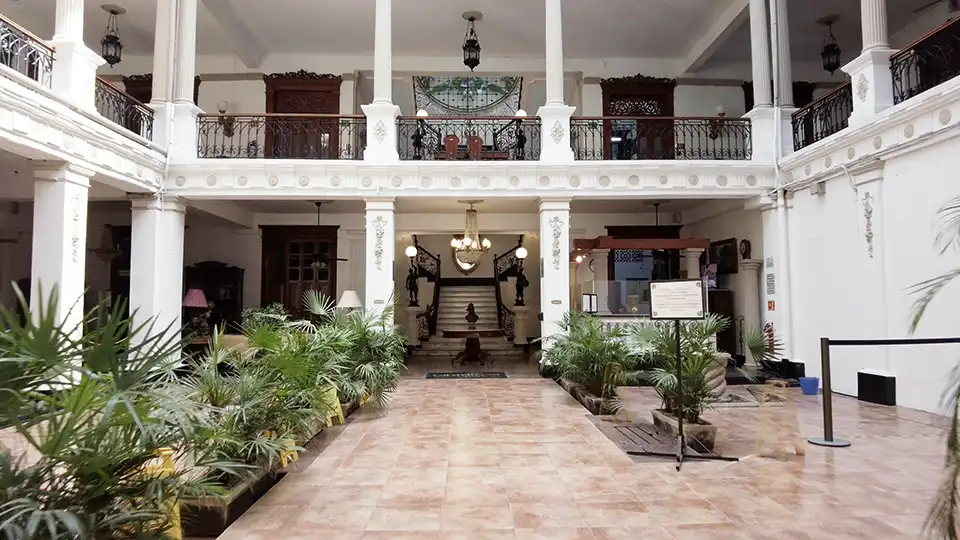
El Gran Hotel Lobby Courtyard
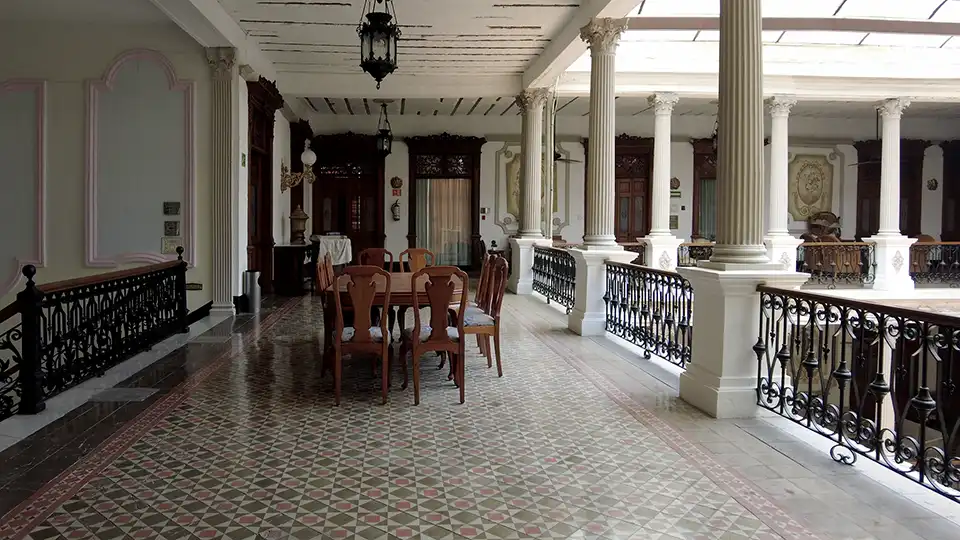
El Gran Hotel Interior (upstairs)
Getting There & Getting Away
Air
Several airlines operate flights to Merida, Mexico, connecting it to various destinations both domestically and internationally. Some of the airlines that commonly serve Merida include:
- Aeromexico: Mexico's flag carrier offering domestic and international flights to Merida.
- Volaris: Low-cost airline providing domestic flights to Merida from various cities across Mexico.
- Interjet: Mexican airline offering domestic flights to Merida from several cities and some international routes.
- Viva Aerobus: Low-cost carrier serving domestic destinations, including Merida, from cities across Mexico.
- United Airlines: International flights to Merida from United States hub airports, including Houston and Newark.
- American Airlines: Flights to Merida from its hub in Miami, United States.
- Delta Air Lines: Flights to Merida from its hub in Atlanta, Georgia, United States.
These are some of the main airlines that serve Merida, but there may be other carriers operating seasonal or charter flights to the city as well. It's always a good idea to check with specific airlines or travel agencies for the most up-to-date information on flight schedules and availability.
Train
There is now a new train route serving the Yucatan, and as of early 2024 the train serves Merida Teya station on the outskirts of Merida. There is an electric bus that connects to the train that serves the city center. There are connections to Cancun Airport and to intermediate stations, and also to Palenque in the state of Chiapas. We can attest that the train is modern, clean and efficient.
The Tren Maya is a new train route that will service all of the Yucatan and adjacent states
Bus and Car
There road network around the Yucatan is in good condition between all the major towns and cities, although roads to smaller towns may be in disrepair.
The major bus compamy ADO serves all major cities in Mexico, and they have good clean a nd comfortable buses serving Merida and neighboring areas. The website is in Spanish though. They also have a smartphone App.
Practical Considerations
Emergency Contacts
In case of an emergency in Merida, and Mexico in general, you can contact the following services:
- Police - Emergency number: 911
- Fire Department - Emergency number: 911
- Tourist Police - Phone: 911
- Emergency Medical Services - Phone: 911
Mexico moved to using 999 as the emergency number in 2016 and 2017. The previous number, which you may still see references to was 066. This number is no longer current
Popular Apps in Mexico
Some popular and usefus apps for your smartphone include:
- Mercado Libre Online Shopping
Copyright © 2025 travel-with-mark.com. All rights reserved. No part of this website or any of its contents may be reproduced, copied, modified or adapted, without the prior written consent of the owner, unless otherwise indicated for stand-alone materials. Unauthorized use is strictly prohibited. All trademarks, service marks, and trade names used in this website are the property of their respective owners and are used for identification purposes only. Your access to and use of this website is subject to our terms and conditions. Details of our privacy practices may be found in our privacy notices